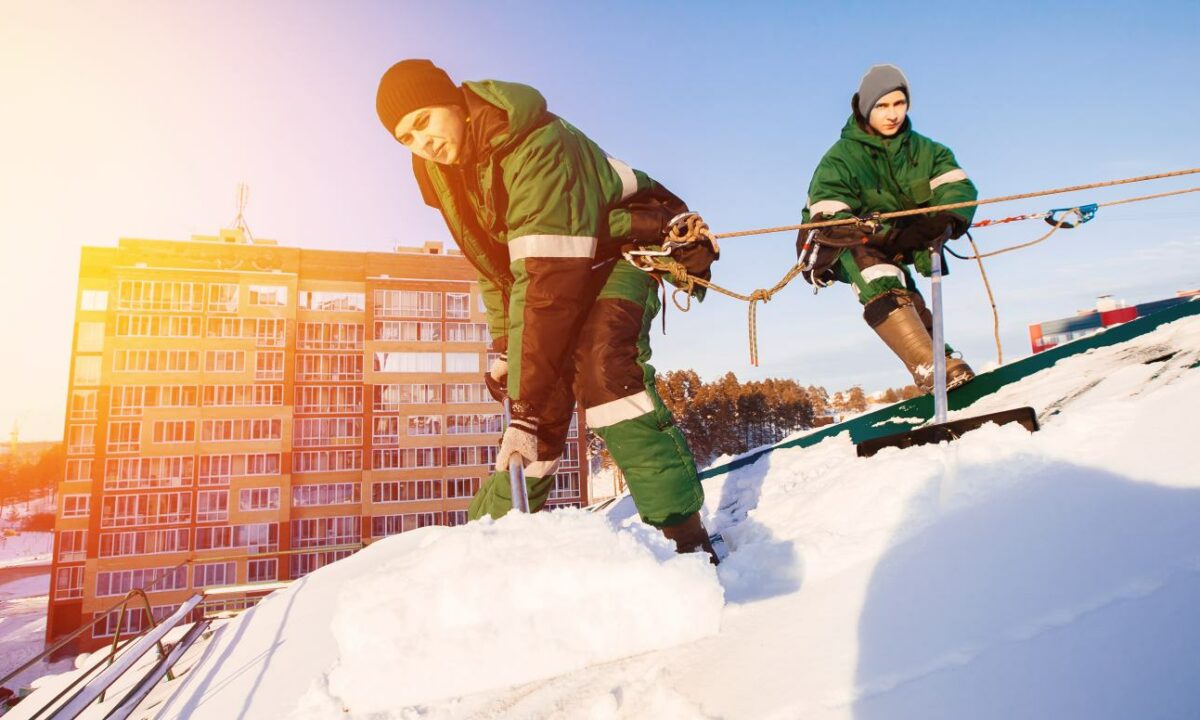
Working in the Cold | How They Do It
Working in the cold can cause irreversible tissue damage, and is certainly more challenging than balmy weather. However, society doesn’t shut down during the winter. Many of our builders and technicians keep our civilization moving, even in freezing temps.
Let’s talk about how modern specialists operate in cold weather and the challenges they face.
Explore this Article
- Working in Cold Weather Awareness Training
- The Risks of Working in Cold Weather
- How The Pros Work in the Cold
Working in Cold Weather Awareness Training
Like everything else in life, working in the cold is easier with knowledge, and that’s why you’ll find just about every proficient facility that operates in sub-zero temperatures supplies their staff with cold weather training or information.
This isn’t because this knowledge is scarce, but just a precautionary measure to make sure all employees understand how to layer, the importance of gloves, and know how to choose ‘dry-wicking’ clothing.
After all, many know how to work in the cold, but if they don’t it’s much more dangerous and therefore companies are better safe than sorry.
The Risks of Working in Cold Weather
Hypothermia is often mentioned when we think about cold weather or water, but the cold can harm you in many other ways. Freezing temperatures can cause tissue damage that lasts a lifetime.
That’s why specialists the world over bundle up to avoid these cold weather injuries:
- Trench foot is a condition that develops after being exposed to water for too long. It’s worth noting that the weather doesn’t have to be freezing for trench foot to occur; if temperatures fall below 10°C/50°F, you should take precautions to keep your feet warm and dry. Trench foot symptoms include numbness, itching, tingling, swelling, and potentially blisters. It affects both muscle tissue and nerves. If detected early on, there is no lasting tissue damage, but if left untreated, there may be irreversible tissue damage.
- Chilblains is a moderate, reversible condition that occurs after many hours of cold exposure; it can develop on your hands, feet, or other extremities at temperatures as high as 16°C/60°F. It produces redness, blisters, inflammation, and discomfort, which intensifies when touched. Curing it is as easy as removing yourself from the cold.
- Frostbite is an injury that can occur in any region of the body that has been exposed to extremely cold temperatures for too long. Frostbitten skin is literally frozen, resulting in lasting harm. Milder cases of frostbite might result in long-term symptoms including pain, numbness, or sensitivity to cold, while more severe cases could cause tissue necrosis and more extensive nerve damage.
- Hypothermia can cause death. Early signs of hypothermia include shivering, an insatiable cold sensation, and a decline in physical ability. Later phases are marked by significant physical and mental impairment, loss of shivering, slowing respiration, and, in severe instances, death.

How The Pros Work in the Cold
They Monitor Weather
Pros check the weather every time before they work. This is all the more crucial in places like Alaska. However, it is easy and quick and should be considered everywhere.
Weather detection has certainly become more reliable over the last 50 years. So the pros check thoroughly, but none of them solely rely on the forecast. They often bring extra clothes to be prepared for surprises.
They Use Layered Clothing
Professionals have been using layered clothing in the cold for millennia. Long johns are a great way to lock in your body’s heat however materials like Gore-Tex can block wind. Hence why pros favor the layered approach and a change of clothes just in case they sweat too much or get wet and damp.
However, sometimes it can be too much. For instance, wearing too thick of socks in boots eliminates that warm pocket of air your feet and boots produce.
Air is one of the best insulators, so pros recommend you have air in between you and the cold outside layer whenever and wherever possible.
OSHA recommends that anybody working outside in the cold wear at least three layers of clothing. Choose fabrics like wool, silk, or synthetics that maintain their insulating qualities when wet.
They Stay Dry
Professionals stay dry at work by dressing in layers and bringing extra layers to exchange in a pinch.
Raincoats work well for rain, but they also don’t breathe or let your body temperature escape, which can cause excessive sweating. That’s why many specialists rely on marine wool and other fabrics that don’t lose their thermal properties when wet.
They Cover Everything
If the temperatures are low enough, it can take as little as 30 minutes of exposure before frostbite sets in. As you might expect, the areas that are most vulnerable to frostbite are the ones that we tend to protect the least – the fingers, toes, cheeks, ears, and nose. You may not need to start bundling up as soon as the fall weather makes an appearance, but it’s still smart to be aware of just how quickly the extremities can be affected by severe cold.
They Adhere to Laws
Employees in Canada who are working in cold temperatures follow a specific schedule to ensure that they don’t spend too long exposed to the cold. Breaks are provided every two hours, but workers may get additional breaks if the wind velocity increases, or if the temperature drops. If temperatures drop below freezing, employers also have to provide heated shelters and restrooms where employees can warm up during breaks.
They Consume Warm Drinks
Being cold can be exhausting. Your body is constantly trying to regulate your temperature and using energy to achieve this.
That’s why coffees, teas, hot chocolates, and even warm water are a common sight on cold worksites.

Warming yourself up from the inside, along with wearing the right clothing can save energy, comfort, and limbs. So naturally, professionals working in the cold seldom pass up a warm drink.






























